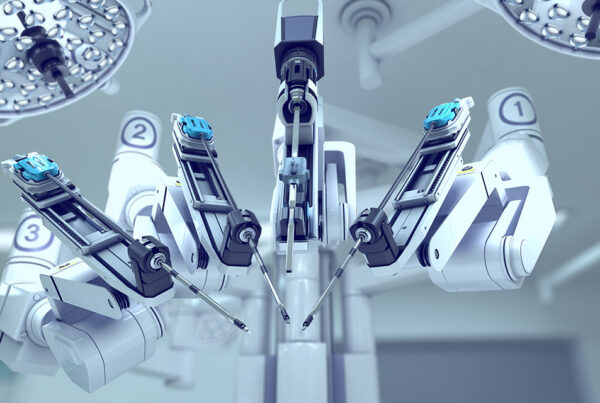Technological innovations. Rapid adoption of electronic medical records and telemedicine. A rapidly aging population. There’s no question that Latin American healthcare markets are changing. Hospitals constantly need to stay in front of these trends, and device and equipment manufacturers need to be ready to provide what hospitals need, when they need it.
[thrive_leads id=’7632′]As part of our tracking of the medical device/equipment market in Latin America, Global Health Intelligence (GHI) has focused on predicting what 2018 will hold for the industry. Here’s a look at those predictions—and the data that’s fueling them.

Brazil Will Bounce Back
According to projections from the International Monetary Fund (IMF), the Brazilian economy posted a meager growth of 0.7% in 2017. However, 2018 appears poised to paint a better, more robust picture. Economic growth is projected to more than double and reach 1.5%.
As part of this, GHI anticipates that medical equipment and device sales in Brazil will surge in 2018 compared to current levels. One major reason for this projection is due to increasing import levels. As we reported not long ago, as per ShareScope—GHI’s service to analyze import data and market share/size for medical equipment brands—the forecasted value of medical equipment/devices imported into Brazil in 2017 went up 15%. This is significant for the marketplace, because generally speaking, import numbers are a direct proxy to sales, given that equipment is imported with the objective of being sold.
In addition, based on extrapolations from HospiScope — GHI’s LatAm hospitals database —figures are also pointing toward a strong 2018 in Brazil. This includes increases in installed base equipment between 2016 and 2017 in Brazil, such as:
- A 34% increase in electrocardiogram machines in Brazil’s hospitals in 2017
- 14% growth in nuclear medicine systems-positron emission tomography in Brazil’s hospitals in 2017
- A 10% uptick in endoscopy machines in Brazil’s hospitals in 2017
- A 4% increase in X ray machines in Brazil’s hospitals in 2017

Mexico Makes Its Mark
Like Brazil, Mexico has experienced volatility in recent years when it comes to both overall economic and healthcare sector growth. GDP growth in Mexico has remained fairly flat in recent years, with 1.3% growth in 2013 to 2.3% in 2014, 2.5% in 2015 and 2.3% in 2016 (Source: INEGI). In October 2017 the IMF forecasted GDP growth to be 1.9% for Mexico in 2018.
Not surprisingly, the country’s recent economic difficulties have affected the medical device market in Mexico. ShareScope data analysis indicates that after solid growth in import values and quantity in 2015 and 2016, there will be a forecast drop of 19% in 2017 (final figures not yet available).
However, the news isn’t all bad in Mexico. The sexenio, the common word for the six-year term limit placed on the Mexican president, is up in 2018, and many are projecting that healthcare spending could rise with the election of a new president. While HospiScope data indicates that 60% of the hospitals in Mexico are private, the rest are public. This becomes significant in terms of spending because public hospitals in Mexico have a much higher bed count than private hospitals—roughly 90 beds per hospital versus 15 per hospital in the case of private hospitals. As such, public hospitals in Mexico account for approximately 80% of the hospital beds in the country. With the new administration in place, public spending on healthcare could increase.
In addition, GHI’s HospiScope has been tracking increases in installed base of capital equipment in Mexican hospitals between 2016 and 2017, including:
- A 12% increase in newborn cribs in Mexico’s hospitals in 2017
- A 10% increase in x-ray machines in Mexico’s hospitals in 2017
- A 5% increase in endoscopy towers in Mexico’s hospitals in 2017
- An 8% increase in ultrasound machines in Mexico’s hospitals in 2017
- A 20% increase in PACS in Mexico’s hospitals in 2017
[thrive_leads id=’7635′]

Smaller Markets Surge
The big players of Brazil and Mexico aren’t the only countries that GHI expects good fortune from in 2018. Smaller markets like Chile, Peru, Guatemala and Costa Rica should become increasingly important players in the medical equipment markets, as well. Here are just a few areas where these countries are showing increases in installed base of capital equipment between 2016 and 2017:
Chile
- A 9% growth in radiotherapy equipment in Chile’s hospitals in 2017
- A 34% increase in stereotactic mammography machines in Chile’s hospitals in 2017
- A 10% upsurge in CT scanners in Chile’s hospitals in 2017
Peru
- An 18% growth in nuclear medicine systems-positron emission tomography in Peru’s hospitals in 2017
- A 27% increase in ultrasound machines in Peru’s hospitals in 2017
- A 24% uptick in ventilators in Peru’s hospitals in 2017
Guatemala
- A 134% increase in PACS in Guatemala’s hospitals in 2017
- A 73% upsurge in CT scanners in Guatemala’s hospitals in 2017
- A 67% uptick in infusion pumps in Guatemala’s hospitals in 2017
Costa Rica
- A 48% increase in anesthesia machines in Costa Rica’s hospitals in 2017
- A 49% increase in endoscopy towers in Costa Rica’s hospitals in 2017
- A 42% uptick in laparoscopic surgery equipment in Costa Rica’s hospitals in 2017

Private Healthcare Continues to Increase
One of the major trends that GHI projects for 2018 and beyond is a growing customer base for private medical services. Increasingly, the middle class is complementing their public health coverage with a private option, so much so in fact that Latin America’s health insurance companies have the most rapid level of growth in the world, with 30% growth each year projected through 2025, as per McKinsey and Company.
[thrive_leads id=’7630′]With these changes also come opportunities to serve working-class individuals who feel the financial squeeze. Increasingly, specialized outpatient low-cost institutions are becoming part of the LatAm private health care system. In fact, a recent article by the Oxford Business Group noted that the public and private sectors of the healthcare system in Mexico are increasingly coming together and cooperating in order to better serve all of Mexico’s patients.
As new facilities become a part of this rapidly changing healthcare environment, GHI will keep you up-to-date on the device and equipment needs of any new facilities that form as a result, as well as the evolution of the competitive landscape surrounding insurance and offering.

Penetration of Low-Cost Products
It is no surprise that Latin American healthcare budgets are tight and will continue to be tight heading into 2018. Naturally, this means that LatAm hospitals will continue to be attracted to lower-priced alternatives.
An interesting development is that Asian markets have begun to form partnerships with Latin American healthcare systems. Both China and Korea, for example, have formed steadily growing partnerships with the region, thus increasing the flow of goods between the regions. If you’re a medical device or equipment manufacturer or distributor with an interest in Latin America, this is certainly a trend that’s worth keeping an eye on.
[thrive_leads id=’7637′]NEXT STEPS
Contact GHI to find out more about how you can use HospiScope to take advantage of the recent growth in installed base equipment in LatAm hospitals, ShareScope to know your company’s market share with different types of equipment—plus those of your competition—and In-Scope for competitive intelligence and custom research to drive key business decisions.


